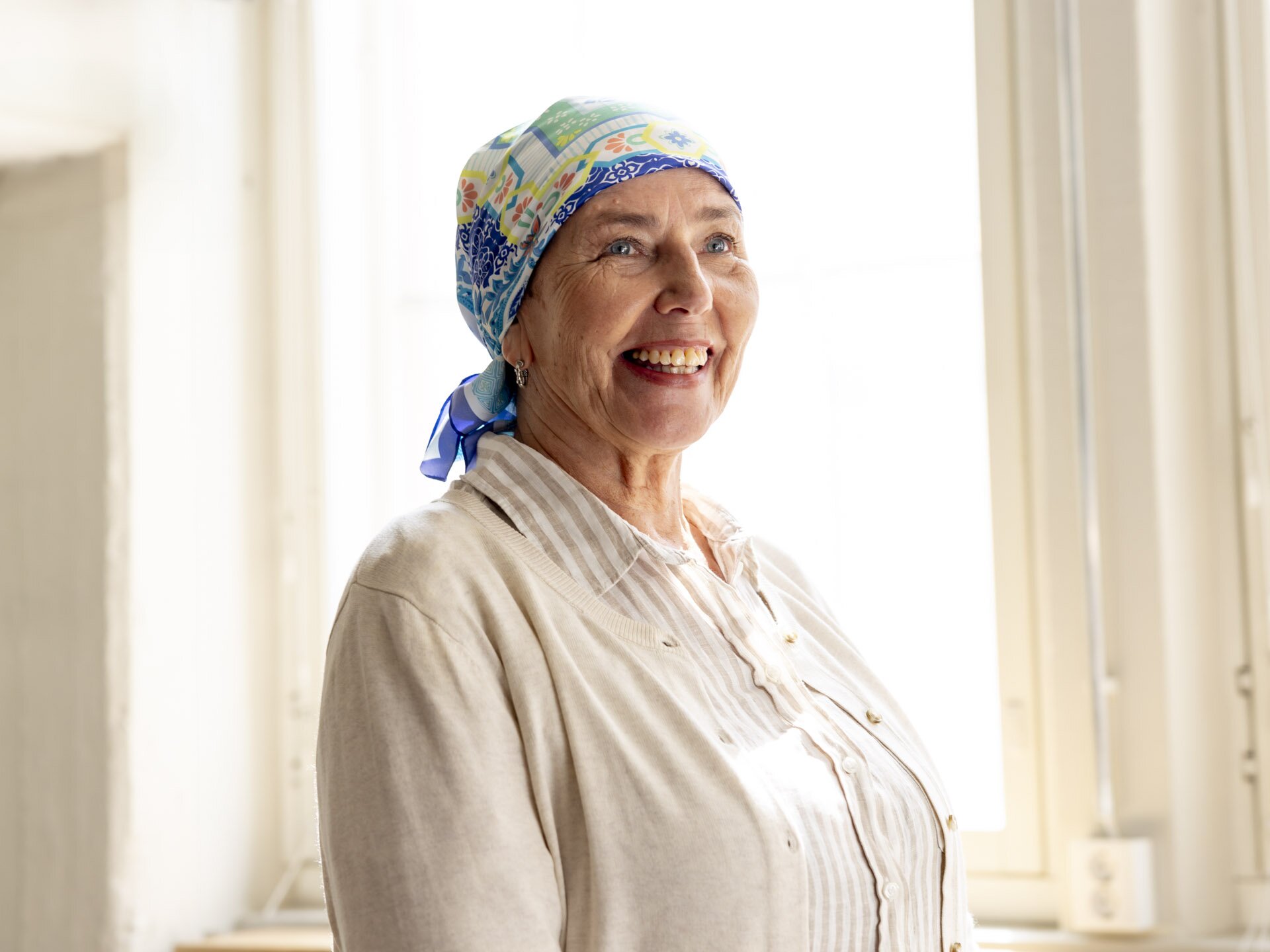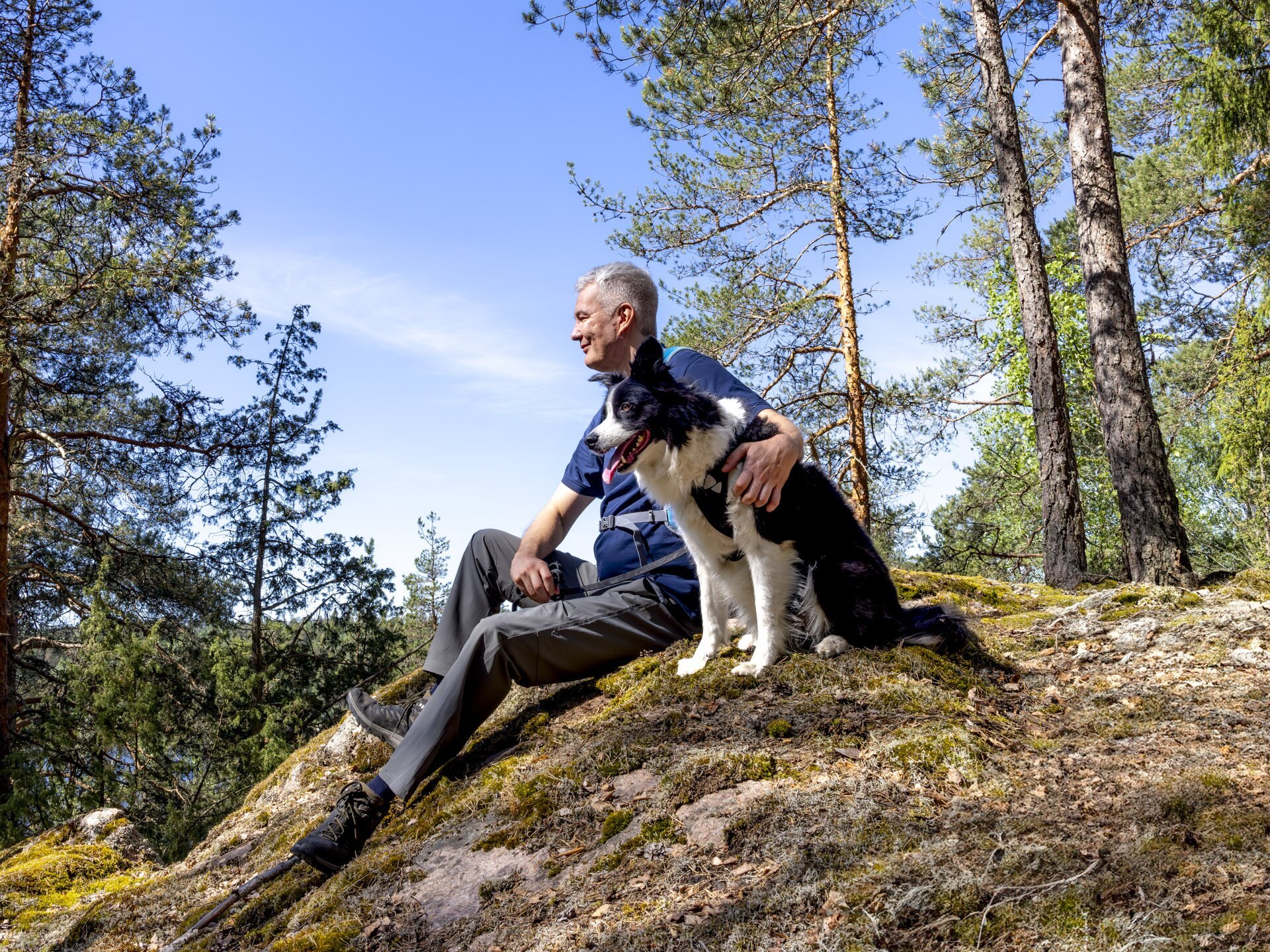For Kaj Pirhonen, 73, retirement doesn’t mean resting on his laurels. He attends aquafitness classes twice a week and goes swimming twice a week. His hobbies also include boccia and bowling.
The high point of the week is the Friday football club that his grandchildren, aged three and a half and four and a half, attend.
Kaj has been into sports all his life. He played football until he was 40, and the family’s everyday life included his wife’s and children’s competitive sports activities. Daily life was divided between home, work, the swimming pool and football pitches.
However, Kaj’s life also included a long period when even incidental exercise was out of the question. The reason wasn’t recognised for quite some time. In hindsight, the reason was not very surprising.
All work, no exercise
Twenty years ago, Kaj’s daily life was very different from what it is today. He ran a grocery kiosk with his wife, and they worked 70 hours a week.
He smoked up to three packs of cigarettes per day. He had started smoking at the age of 13.
“My goal was to have the time for a proper meal once a week. Of course, this took a toll on my physical condition.”
His health began to fail in the late 1990s. In the middle of the working day, he had to lie down on the kiosk floor, because he no longer had the strength to stand on his feet. Back pain appeared around the same time.
COPD was found during initial rehabilitation assessment
When the cause of Kaj’s back pain was examined, his lungs were also checked. A small amount of asbestos was found, which was not thought to affect his ability to work.
His condition continued to worsen, and no reason was found. This also affected his mood.
“I became depressed to some degree because I had no energy and didn’t know why.”
I became depressed to some degree because I had no energy and didn’t know why.
Eventually, he was no longer able to work at the kiosk, so the business was sold.
The following spring, in 2002, Kaj was admitted to working capacity rehabilitation. During his initial assessment, he was diagnosed with chronic obstructive pulmonary disease (COPD). As a result, Pirhonen retired on disability at the age of 53.
Quitting smoking was an easy decision
Kaj will never forget the second Saturday of May 2002.
By that time, he had smoked around half a million cigarettes, according to his calculations. He regrets none of them – the problem, he says, is that he didn’t know when it was a good time to stop.
A couple of weeks after the diagnosis was confirmed, the decision was clear. Kaj walked into a store and bought a pack of cigarettes – and then a packet of nicotine patches from the pharmacy.
The cigarettes were for a rainy day – a day that never came. He quit cold turkey after decades of smoking.
“The decision to quit had been on my mind for quite some time, so it was relatively easy to quit.”
These days Kaj talks a lot about quitting smoking. He is an experiential expert of the Organisation for Respiratory Health in Finland and also provides training on quitting smoking. He is happy to talk about his own experiences and hopes that he can encourage others to make better choices.
Getting fit with an incurable disease
When Kaj quit smoking, the condition of his lungs began to improve, along with his general health.
In the first year after his diagnosis, Kaj could walk 800 metres at best. Two years later, he started to attend aquafitness classes, and a year later, he joined regular exercise classes.
“It took me three years to get into reasonable shape.”
However, the state of his lungs is steadily deteriorating. He has five different medicines for COPD.
Grandchildren motivate self-care
Exercise and medication will help in any case. Kaj says that for some years now, based on spirometry test results and considering the impacts of ageing, each year his lungs have been in better shape than in the previous year.
Kaj listens to his body and exercises within his limits, which is important for his well-being and for the treatment of COPD.
“If I try too hard in an aquafitness class, for example, I lose my energy for the rest of the day. But when you’ve been ill for a long time, you learn to listen to your body.”
When you’ve been ill for a long time, you learn to listen to your body.
Kaj says he takes much better care of himself now than when he was younger. His grandchildren are one of the motivating forces. He wants to keep up with them. As children grow up, the pace only accelerates.
Kaj Pirhonen’s tips for people with COPD
- Quit smoking. The sooner you can quit, the better. It significantly slows down the progression of the disease and thus means more years of life.
- Get moving and listen to yourself. Think about what kind of exercise is good and meaningful for you and find a way of exercising that works for you. If you don’t like walking, swimming or cycling alone, try group exercise. When you exercise with others, you tend to exercise a bit more than on your own. Remember to listen to yourself and make sure you are not exercising too hard.
- Learn to accept your condition. COPD is an incurable disease. You can still do a lot, as long as you take care of yourself. Acceptance is important here.











